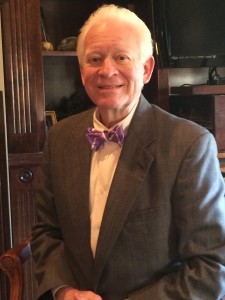When you have a relatively rare disease, the size of your network is of the utmost importance. Renal cell carcinoma is a rare cancer and a top medical oncologist in a community clinic setting like we have here in Columbus might see less than 10 cases of RCC per year. I just hung up from a 20-minute telephone conversation with Dr. Michael Kaehler, an RCC specialist in Munich, Germany who sees over a thousand cases of RCC every year. Dena Battle, president of KCCure, a recently launched national kidney cancer foundation with a goal of promoting research and patient care for those of us with this disease, was able to get Dr. Kaehler to convene a group of neurosurgeons and radiation oncologists in Munich to review my case.
My phone conversation with him this morning was both exciting and terrifying. The most terrifying thing I learned is that this tumor is considerably larger than we had thought. At over 10 centimeters in length, it spans my spine at L1-L3 and it is growing around my spinal nerves. More toward the exciting end of the informational spectrum is finding out that although my back is literally against the wall, there is hope for me. He sees a combination of surgery and Cyberknife (radiation) that can be brought to bear to keep the tumor in check and keep my “tumor burden” in a manageable state over time.
The first order of business for me is that I have to begin taking another TKI (tyrosine kinase inhibitor) drug (oral chemotherapy). I was a strong responder to Votrient, the drug that turned my hair white and caused me to lose 100 pounds, but it also shrunk the tumors in my spine and in my adrenal gland. IF (and this is a big if) Cabozantinib, the new drug I’ll be taking shrinks my spinal tumor, we’ll attempt to keep it at bay by using a combination of surgery and Cyberknife to keep it in check. At some point, if the tumor continues to encroach upon my spinal nerves, then I’ll have to have a surgery called a dorsal vertebrectomy to give my spinal nerves more room through my spinal canal.
Knowing what I know about what life is like while taking a TKI drug, I’m going to eat everything that I love over the next few days, because once the drug takes hold of me, my tongue will be turned into a one-trick pony and will only taste aluminum. Everything from my heavenly lasagne to a big juicy medium rare steak will only have one taste — aluminum. I will be nauseated and will experience diarrhea on a daily basis and it will take every bit of restraint I have to be fun to be around. That is my goal, however, because I believe that my attitude has contributed mightily to the fact that I’m still alive. Attitude, along with a loving God, loyal friends, an incredible family and a mountain of prayers.
The rest of my life, however long it turns out to be, will be a study in divine intervention, medical science and perseverance. The only part of this I can control is the perseverance, and making sure I am able to be seen by doctors who know my condition and have the mad skills to attempt to defeat it, regardless of where in the world we have to go to see them. I don’t know how we’ll afford all of this. We have great insurance, but insurance doesn’t cover trips to Germany, if we end up having to go there. We’ve made it this far, with our small business resources and faith. I don’t expect that to change going forward.
